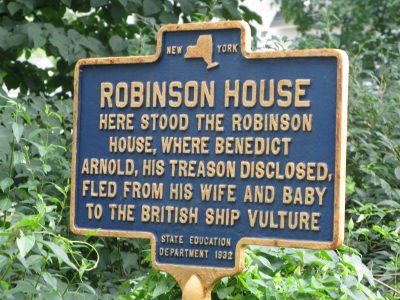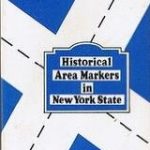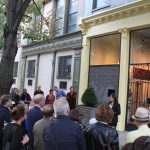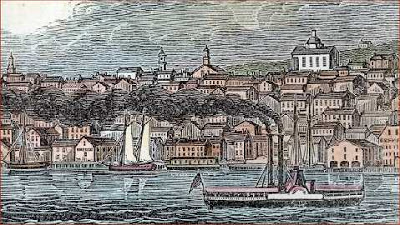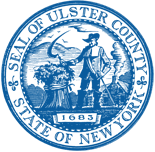
Counties should have county history conferences. So I have been preaching since 2011 when I initiated five such conferences in the Hudson Valley and helped organize four of them. One of them was the Ulster County History Conference. While it was not as successful as the Orange and Putnam counties’ events, it did provide a memorable moment.
Ulster County History Conference: Background
The Ulster County historian at that time had a Virginia family ancestry. During the course of the conference, she mentioned an ancestor who had fought in a Civil War battle for the Confederacy. No sooner had she uttered these words when, lo and behold, a conference attendee leapt up and proclaimed that her ancestor also had fought in the same battle but for the Union. These two women then took their argument out to the parking lot and duked it out in the only American war even longer than Afghanistan since it still hasn’t ended. Actually their response was more of chuckle than fisticuffs but in the interest of oral tradition, let’s go with the more exciting story even if it isn’t true.
The current conference was more sedate but it did have its grumblings (see below). Geoff Miller is the new county historian. He is a retired teacher who is chair of the Reher Center for Immigrant Culture and History Committee for the Jewish Federation of Ulster County since its inception in 2002. He spent his first year as county historian getting the lay of the land, getting to know his fellow historians in the county. Based on that, he put together a team of municipal historians and members of the county historical society to organize the conference. The theme was resources and not history itself. In other words, what are the resources available at the state, regional, and county level to the history community in Ulster County.
The conference drew about 45 people. The conference was held in the combined town halls of Marbletown and Rosendale. An elementary school building has been repurposed as a shared town hall for the two municipalities. The Senate House was not present. I mention that simply to point out that when hosting such conferences, one should include the state and NPS sites if there are any in your county. Also Historic Huguenot Street, probably the largest history organization in the county and the one most likely to draw tourists from afar, was not in attendance.
Ulster County History Conference: The County Executive
To begin the conference, Geoff referred to himself as the facilitator of the county history community. He then introduced Mike Hein, the County Executive. As regular readers of my blog know, I advocate for having the county executive welcome the attendees. I think it is beneficial to the history community to be visible in this way and for the county executive to see that there is a history constituency in the county.
If possible, I suggest county conference organizers should ask the county executive to send letters of invitation to the mayors and town supervisors in the county for their historians to attend. As we all know, not all municipalities comply with the state regulations to have a municipal historian. An invitation from the county executive serves as a reminder to comply.
I don’ know this county executive. My impression from listening to him and his interaction with the audience was that he has a genuine interest in Ulster County history and is accessible to the history community. He called for respect for the past and the people before us. He stressed the importance of preserving our history. He considers the county the size of Rhode Island to be blessed with many historic sites. He thanked the people for what they do saying it does matter and is pivotal. If the history community wanted to do something, I think he would support it as best he could at the county level and assist in seeking state help if needed.
Ulster County History Conference: The State Resources
Speaking of the state, the first session of the conference consisted of presentations by State Historian Devin Lander and Clare Fleming of the New York State Archives.
Devin spoke mainly about the still new website for the Office of the Historian. He was able to link online directly to the site and navigate through it as part of his demonstration. I am not going to repeat what he said. To find out more about the site click here. He also encouraged people to sign up for the state historian newsletter when visiting the site.
Devin also spoke about National History Day. He participates as a judge in the competition. He would like to see more schools participate in it. He then expressed a desire for the students to use more local and state history in their presentations. This comment led to some audience responses which I will save for the end of the post.
Clare spoke about various document-related programs the State Archives offered. Again, this was in keeping with the theme of being a resource-information conference for the history community. These main program was the Documentary Heritage and Preservation Services for New York (DHPS/NY). It can be accessed here dhpsny.org and by email at info@dhpsny.org. It is possible to have archive people visit your site and she mentioned the workshops and webinars which were available. Finally, she encourage people to contribute articles to the New York Archives bulletin. Appropriate brochures and bulletins were distributed.
Again, as regular readers of my posts know, I am a strong advocate of training for municipal historians and the history community. There is still a lot to be said for in-person training with colleagues. I would like to see formal training programs for historians with the New York State Archives, Library, Museum including the Historian, all in the same building, Parks at Peebles Island, State Education Department for k-12 curriculum, and I LoveNY for heritage tourism. For me, this is a no-brainer
Ulster County History Conference: The County Resources
The second session was devoted to the county archives. The presentations were by Ulster County Clerk Nina Postupak and archivist Taylor Bruck. Every county clerk office has its own story to tell. In this case, Ulster County owns a colonial house dating back to 1661. The Matthewis Persen House is located within the Kingston Stockade National Historic District. Therefore this county clerk office has continuing exhibits on display there. As part of its digitization program, the County will start preserving its exhibits digitally so they don’t disappear or end up solely in storage once the exhibit is taken down. In addition, the history lectures by the County Clerk also will be available online.
The County ownership of an historic building enables it do what other counties might not be able to do. For example, included in the packet distributed by the Clerk’s office was an invitation for any history organization to participate as a Guest Host on a Saturday during the season at the Matthewis Persen House. This means an organization could have lecture, exhibit, re-enactment or event at the county-owned facility. The invitation states:
The County Clerk’s Office wants to ensure that the Persen House continues to be a viable resource for the historical and cultural community organizations throughout Ulster County. We hope that this added support [promoting your Guest Host event through the County resources] …will encourage you to return each year.
Space does not permit a review of all the activities, but overall it seems fair to conclude that this County Clerk office is very involved in the history of the county. If there is a county clerk conference, it would nice if the Ulster County Clerk could show other county clerks what is possible.
Ulster County History Conference: Regional Resource and Dutchess County
The final session before lunch was by Jennifer Palmentiero, Digital Services Librarian for Hudson River Valley Heritage (HRVI). As you can see, digitization was a strong theme in the three morning sessions. The session introduced the audience to the HRVI products and services although some members in the audience seem to be active users already. For information about HRVI go to hrvh.org.
After lunch, another digital session presented a partnership among a collage (which had received a huge grant), a historical society, and a town historian. Technically, this was not an Ulster presentation since the college, Bard, the town, Red Hook, and the historical society, Red Hook, are in Dutchess. The grant enabled the college to purchase equipment to use in gathering oral histories. Professor Susan Merriam outfitted a car to travel around the community working with Claudine Klose, Historic Red Hook, and Emily Majer, Red Town historian and village of Tivoli Deputy Mayor. Non-history students seem to quickly grasp how to organize and catalog data accumulated from the house-history input form they developed. This demonstration excited the audience for its potential but it clearly benefited from the partnership with the college and a huge grant.
The final presentation was a work-in-progress about a mobile app fo creating tours with a European vendor.
Ulster County History Conference: Issues and Concerns
The wrap-up session entitled “Issues and Concerns” was most interesting. People did not take the opportunity to leave early. Instead they used it to voice concerns. Please be aware if you a regular reader of my posts that the following comments were unsolicited and unprompted ones.
The deferred comment from Devin’s presentation on History Day in the morning was the question on where is local history in the k-12 curriculum. This led to a comment by Susan Stessin Cohn, New Paltz Town Historian, who has prepared many teacher guides and conducted many teacher workshops to note the problem of how teachers are supposed to learn state and local history in the first place.
In response to the Bard College project, one person raised the civics issue. How do we know where we are? How do we connect and build a community? How do we create a shared space? His answer to his own questions was that history can provide that context if allowed to do so.
Municipal historians came in for some criticism by municipal historians themselves. Municipal historians don’t really have programs. Where are the county and state guidelines [meaning in practice in the real world]? What happens when the historian leaves especially with the collections? They should be stored on town property and not in private houses? Why should people donate private holdings to the municipality if they can see there is no good place to store them? Historians are losing their offices [assuming they ones in the first place. Personally, I think the historian should be based at the library and not the town hall.]
This session would have made a good APHNYS or MANY session. Speaking of APHNYS, the Region 3 meeting was held the next day in Putnam County with County Historian Sarah Johnson. During the conference, one person reminisced about his introduction into local and state history with call to remember the Yorkers!
I am not going to add what I said after hearing these comments on either day. I will note that six people afterwards gave me their cards to add to the distribution list for this blog and that multiple people in attendance in Ulster already get my blog as they informed me. It’s always nice to connect in person instead of just by internet. It isn’t as if the grassroots history community doesn’t know what needs to be or won’t speak up when gathered together, the issue is who is listening especially at the state level.


